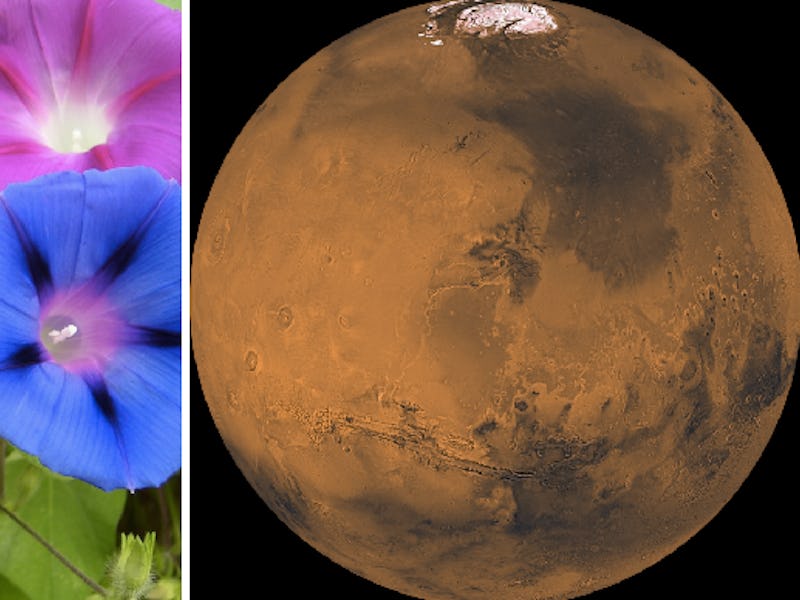Living things on Earth aren’t blasted with radiation because of the planet’s thick atmosphere and magnetosphere. Life on Mars will inevitably be a different, radiation-filled ball game: While the flux levels of ultraviolet radiation on the red planet are similar to ours, there are no natural protections to keep life from being doused with 15 times more radiation than a human would encounter at a nuclear power plant. This makes it impossible for Mars colonists to exist on the planet without shielding, and makes for an extremely tricky situation for any plant life colonists hope to grow there.
See Also: Morning Glory Seeds From Home Depot Are a Good Proxy for LSD (Until You Vomit)
Enter morning glory seeds, the stuff teens love to chew on to get high and the origin of the little blue flowers that dot suburbs. Scientists recently concluded in the journal Astrobiology that morning glory seeds could survive the transfer from Mars to Earth — the journey itself exposes life to unhealthy amounts of radiation — and should be able to handle longer space travel as well. These results also indicate that the seeds may be able to survive fully exposed to radiation on the surface of Mars.
To figure this out, scientists conducted a two-part study. During part one, 2,000 seeds were fixed on the outside of the International Space Station and exposed to 558 days of high levels of UV light and cosmic radiation. The seeds were either tobacco or Arabidopsis thaliana, a delicate looking white flower that can grow easily in rocky soils. When the seeds were brought back to Earth, the scientists tested whether they could actually germinate and grow into a plan and found that only 20 percent of the seeds could.
Morning glory seeds can handle high doses of UV radiation.
This result struck the scientists with the idea that if a seed was able to repair its own DNA damage, then it could survive exposure to UV light. So they blasted the original two types of seeds (tobacco and A. thaliana) and morning glory seeds with UV light and found that the later were absolutely baller at surviving. Science reports that the morning glory seeds were able to germinate after being exposed to “light roughly six million times the dose typically used to sterilize drinking water” while the other seeds were killed.
Morning glory seeds are so successful at handling radiation because the seeds have a protective coating made of flavonoids, which acts like a natural sunscreen. These plant seeds, the researchers write, are additionally “model space travelers” because “seeds inherently tolerate temperature extremes, vacuum, and desiccation; they accumulate potentially protective UV-absorbing substances, particularly in their seed coats.”
This discovery is a boon for scientists who hope that life from Earth could survive outside of our biosphere. It also means that bored Mars colonists may have a ready-made way to trip out in space, if they are okay with all the inevitable vomiting.
See Also: On Bicycle Day,” Albert Hofmann Took the First LSD Trip
